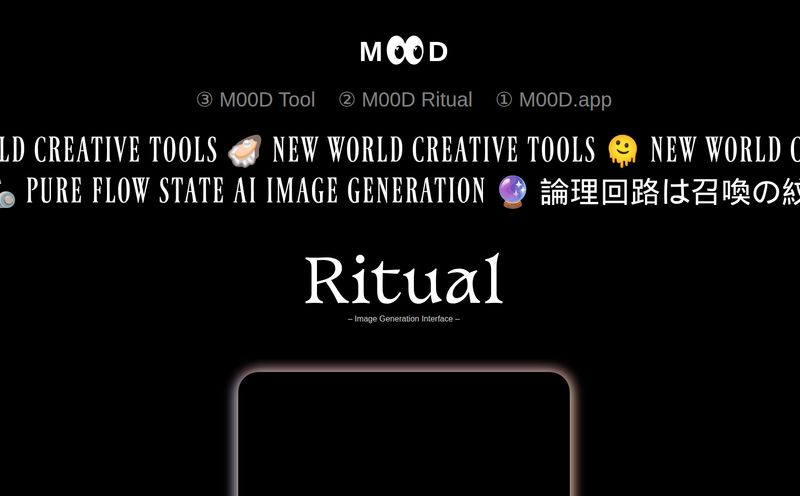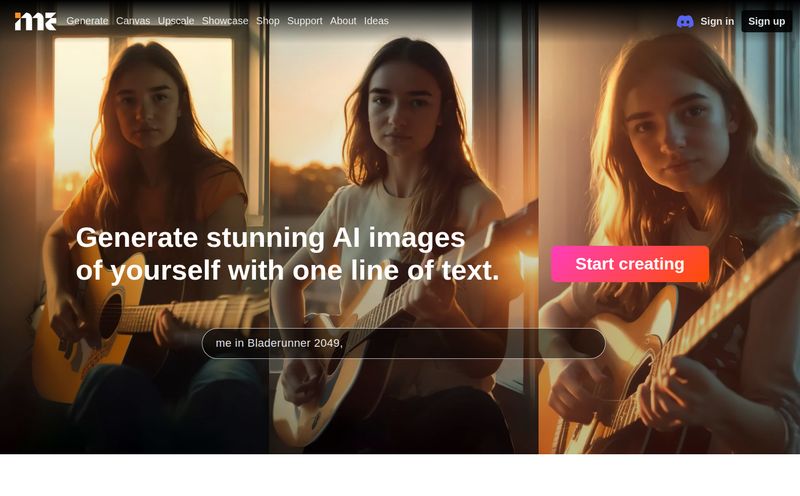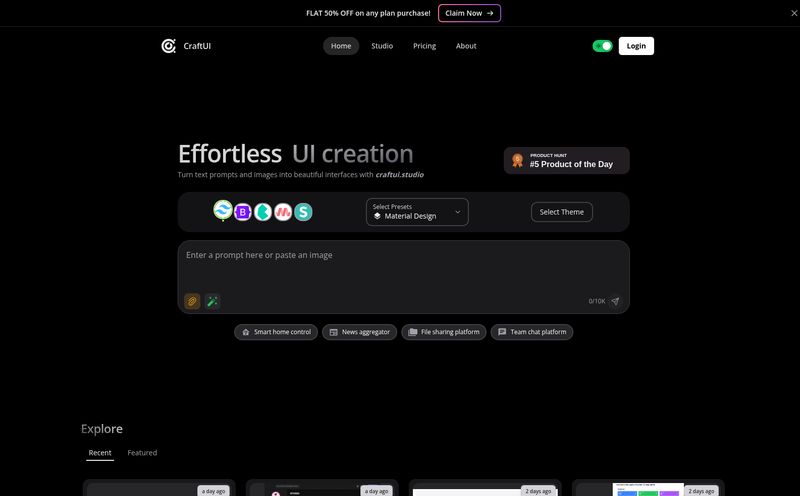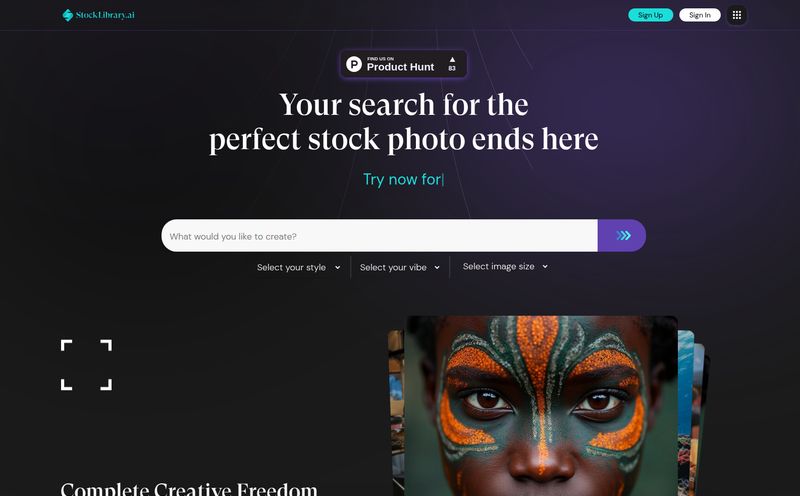I’ve been in the digital marketing and design space for years. Long enough to remember when 'optimizing' meant cramming a keyword into a sentence ten times and when creating a design render meant booking a week of your life with a finicky, overpriced software suite and a computer that sounded like a jet engine. We’ve come a long way.
Every so often, a tool pops up that makes me genuinely pause. Not just another re-skin of an existing idea, but something that feels like a legitimate shift. Lately, that tool has been ArchiVinci. The name itself is a bit on the nose, isn't it? A fusion of 'Architecture' and 'da Vinci'. A bold claim. But after spending some time with it, I have to say… they might be onto something.
So, What Exactly is ArchiVinci?
At its core, ArchiVinci is a suite of AI-powered design tools built specifically for architects, interior designers, and landscape artists. Think of it less as a single program and more like a digital toolbox. You’re not just getting one thing; you’re getting a collection of specialized assistants that can take your raw ideas and spin them into gold. Or, more accurately, into photorealistic renders.
It’s designed to tackle some of the biggest time-sinks in the design world. The tedious back-and-forth of concept visualization, the soul-crushing hours spent on manual rendering, and the high costs of staging a property, even virtually. ArchiVinci aims to automate and accelerate these processes, using AI to interpret your sketches, models, and prompts.
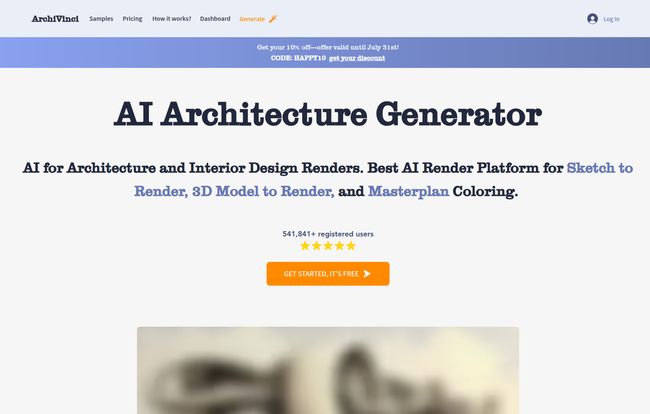
Visit ArchiVinci
The Features That Actually Matter to a Designer
Look, any platform can throw a list of features on a landing page. What I care about is what works and what actually saves me from a headache. Here’s the stuff that caught my eye.
From Napkin Sketch to Photorealistic Render
This is the big one. The holy grail. The Sketch to Architectural Render AI Tool is probably the main draw, and for good reason. I've lost count of how many brilliant ideas started on a crumpled piece of paper or a quick iPad doodle, only to get lost in translation when moving to a rigid CAD program. This tool lets you upload that rough sketch, add a few text prompts to guide the AI, and it generates a polished, detailed architectural concept.
It's not just a gimmick. It feels like having a junior designer on call 24/7 who can instantly grasp your vision and produce a first draft. The quality is surprisingly high, and while it might not be the final final version, it gets you 80% of the way there in about 2% of the time. That’s a powerful thing for client presentations and rapid brainstorming.
A Full Suite for Interior, Exterior, and Landscape Design
ArchiVinci isn’t a one-trick pony. The platform is smartly divided into specific tools for different needs:
- Exterior Design AI: You can take a photo of an existing building and just... change it. Want to see what that 1970s brick facade would look like with modern wood paneling and bigger windows? Done. It’s incredibly powerful for renovation projects.
- Interior Design AI: This is where things get fun for stagers and designers. Upload a picture of an empty (or cluttered) room, pick a style like 'Minimalist', 'Bohemian' or 'Coastal', and watch the AI furnish and decorate the space. Its a huge time saver.
- Landscape Design AI: A bit of a niche but super useful tool. It helps you visualize gardens, patios, and outdoor spaces. Again, you can go from a simple layout to a lush, green render in minutes.
Beyond the Basics: Virtual Staging and Masterplans
Two other features really stood out. The AI for Virtual Staging is a direct shot at a very expensive industry. Real estate agents and property developers, take note. Instead of paying hundreds or thousands to digitally furnish a listing, you can get it done almost instantly. The ROI on that is just... obvious.
Then there’s the AI-powered Masterplan Coloring. For urban planners and large-scale architects, this is fantastic. Taking a black-and-white site plan and having an AI intelligently color-code zones, add greenery, and render textures can make a dry document feel alive and compelling.
My Honest Take: The Good, The Bad, and The AI
Okay, let's get real. No tool is perfect. After the initial 'wow' factor, I started poking at the edges. Here's my personal breakdown.
What I love is the sheer speed and efficiency. It radically shortens the feedback loop with clients. You can make changes during a meeting instead of saying "I'll get back to you next week." The user interface is clean and surprisingly intuitive for something so powerful. You don’t need a degree in computer science to get started, which is a massive plus. The variety of tools under one roof also means you’re not jumping between five different subscriptions and platforms.
However, let's manage expectations. The output quality is directly tied to the input quality. A messy, ambiguous sketch will produce a messy, ambiguous render. Garbage in, garbage out—the classic rule still applies. You still need a designer's eye to guide it. This isn't a magic 'create architecture' button; it's a force multiplier for people who already have a vision. Also, you do need an internet connection, so no working on a render while you're on a flight, at least for now. And naturally, some of the more advanced features are behind the paywall, though the free version is generous enough to give you a real feel for it.
Let's Talk Money: ArchiVinci Pricing
This is often the make-or-break part. What I appreciate about ArchiVinci's model is the lack of a recurring monthly subscription. They focus on one-time payments for a set period of access. It's a refreshing change from the SaaS-pocalypse we're all living in.
Here’s a quick look at their plans as of my last check (prices are in USD and can change, so always check their official page):
| Plan | Price (One-Time) | Key Features |
|---|---|---|
| 3 Days Unlimited | $39 | Great for a single, intense project. |
| 1 Month Unlimited | $79 | Ideal for freelancers with a busy month. |
| 3 Months Unlimited | $239 | Good value for small studios. |
| 6 Months Unlimited | $449 | A solid option for ongoing work. |
| 1 Year Unlimited | $699 | Best value for dedicated, long-term use. |
All paid plans give you unlimited renders, no watermarks, commercial usage rights, parallel renders (a huge time saver), and upscaling. For what you get, the pricing feels very reasonable, especially when you compare it to the billable hours it saves.
Who is ArchiVinci Really For?
So who should be sprinting to sign up? In my opinion, the sweet spot is for solo architects and small-to-medium design firms. These are the people who feel the pain of budget and time constraints most acutely. ArchiVinci gives them the leverage to compete with larger firms that have dedicated rendering departments.
Real estate professionals are another massive audience. The ability to quickly stage properties virtually or show renovation potential is a killer sales tool. And finally, students and educators in architecture and design programs. It’s an incredible learning tool for visualizing concepts without getting bogged down by the technical complexities of traditional software.
If you're a massive, multinational firm with an army of render artists, you might already have a workflow. But even then, I'd argue ArchiVinci is worth exploring for rapid prototyping alone.
Frequently Asked Questions About ArchiVinci
I've seen a few questions pop up repeatedly, so let's tackle them head-on.
1. How does the 'Sketch to Render' actually work?
You upload an image of your sketch (or a basic 3D model). Then, you use simple text prompts to tell the AI what you want. For example, you might upload a sketch of a house and add prompts like "modern farmhouse style, white board and batten siding, black metal roof, evening light." The AI interprets both the visual data from the sketch and the stylistic instructions from your text to generate the final image.
2. Is there a free version of ArchiVinci?
Yes, there is. When your paid plan expires, your account is automatically downgraded to a free account. This allows you to continue exploring the platform, although some of the more premium features like watermark-free renders and commercial use will be restricted. It's a good way to try before you buy a new plan.
3. Can I use the designs for commercial projects?
Absolutely. All the paid, one-time plans include a license for commercial use. This is critical and something they've thankfully included. You can use the renders you create for client work, marketing materials, real estate listings, and more.
4. What kind of support can I expect if I have issues?
According to their site, they offer support and you can contact them directly. For payment issues specifically, they mention requesting a PayPal invoice, which shows a willingness to work with users on a case-by-case basis. This is a good sign for a newer platform.
5. Is the AI going to take my design job?
This is the big existential question, isn't it? My take: no. Not yet, anyway. Tools like ArchiVinci don't replace the designer's creativity, problem-solving skills, or client understanding. They augment it. It automates the tedious parts, freeing you up to focus on the creative parts. It’s a collaborator, not a replacement.
The Final Blueprint
I started this review a little skeptical. I’ve seen a lot of AI hype that turned out to be hot air. But ArchiVinci is different. It's a practical, well-designed, and genuinely useful tool that solves real-world problems for a specific professional audience.
It's not magic, and it won't make a bad designer a good one. What it will do is make a good designer faster, more efficient, and more capable of bringing their vision to life. It democratizes high-end rendering and visualization, and that's something I can definitely get behind. If you’re in the business of designing spaces, you owe it to yourself to at least give it a try. It just might be the most productive co-worker you’ve ever had.
Reference and Sources
- ArchiVinci Official Website
- ArchiVinci Pricing Page
- ArchDaily article on AI's impact on Architecture
